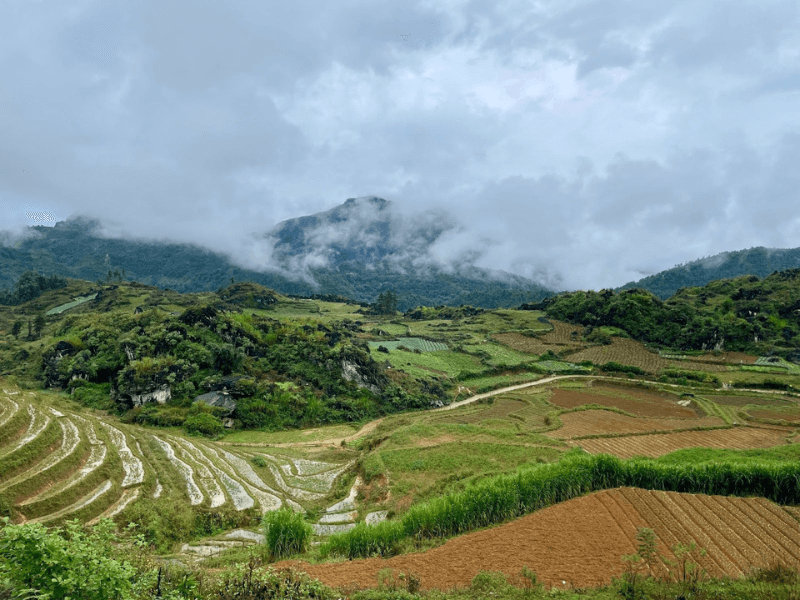To many travelers from the West, Thailand and Vietnam can seem culturally homogenous at first glance. However, the lush, green mountains of Southeast Asia’s highlands are home to many ethnic minority groups with their own distinct cultural traditions, languages, and dress. Highland tribes such as the Hmong, Dao, and Tay in Vietnam, or the Karen, Ahka, and Lahu in Thailand, contribute immensely to the diversity and richness of both Thai and Vietnamese culture. Our new program in Thailand and Vietnam visits many of these highland communities to learn more about cultural pluralism and preservation through trekking, staying with local families, participating in traditional craft workshops, and much more. Our program director Portia Watson recently traveled to Hanoi and Sapa, Vietnam. Read on to hear about her experience and catch a glimpse of what this exciting new program has to offer. 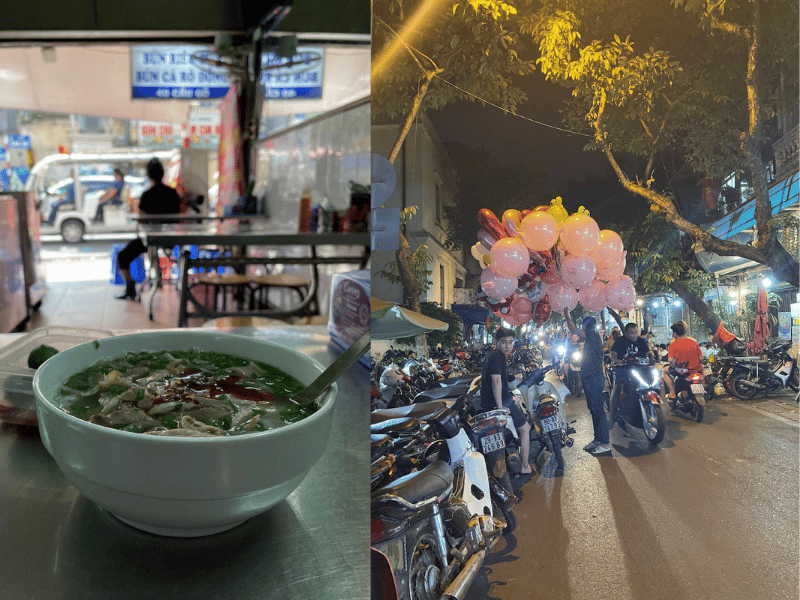
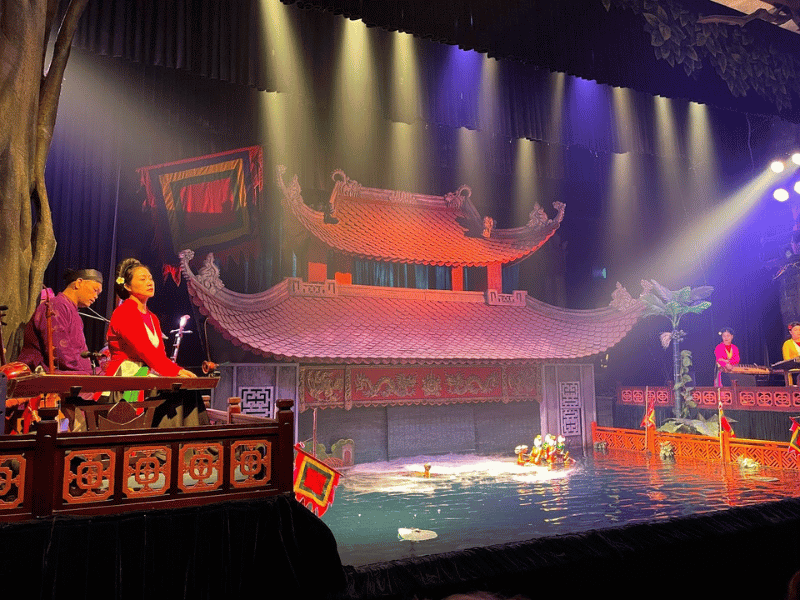 My journey started in Hanoi’s vibrant Old Quarter, where smells of simmering pho broth and sounds of bustling traffic fill the air. After seeing the world-famous water puppet show at Thang Long Theatre, and visiting Vietnam’s Museum of Ethnology to learn more about the country’s many ethnic groups, I boarded a northbound train to Sapa, a beautiful, mist-shrouded town nestled in the Hoàng Liên Son mountains.
My journey started in Hanoi’s vibrant Old Quarter, where smells of simmering pho broth and sounds of bustling traffic fill the air. After seeing the world-famous water puppet show at Thang Long Theatre, and visiting Vietnam’s Museum of Ethnology to learn more about the country’s many ethnic groups, I boarded a northbound train to Sapa, a beautiful, mist-shrouded town nestled in the Hoàng Liên Son mountains. 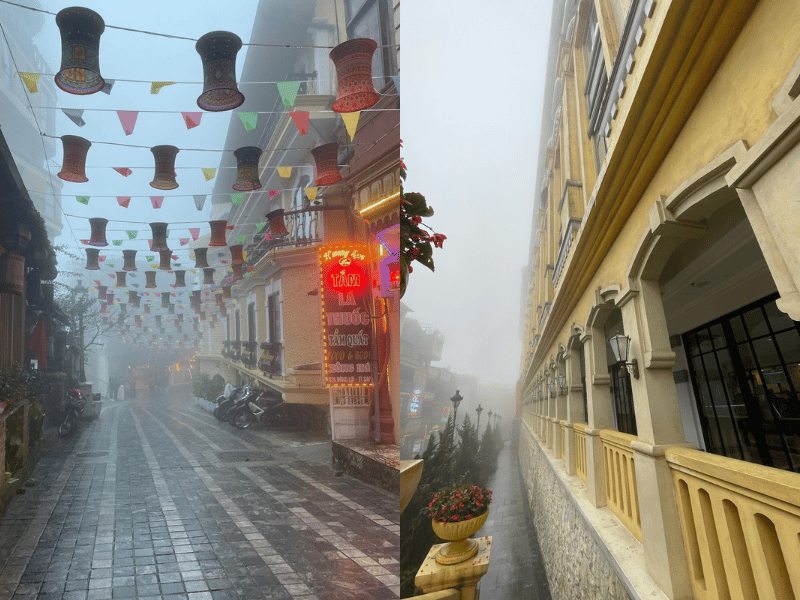
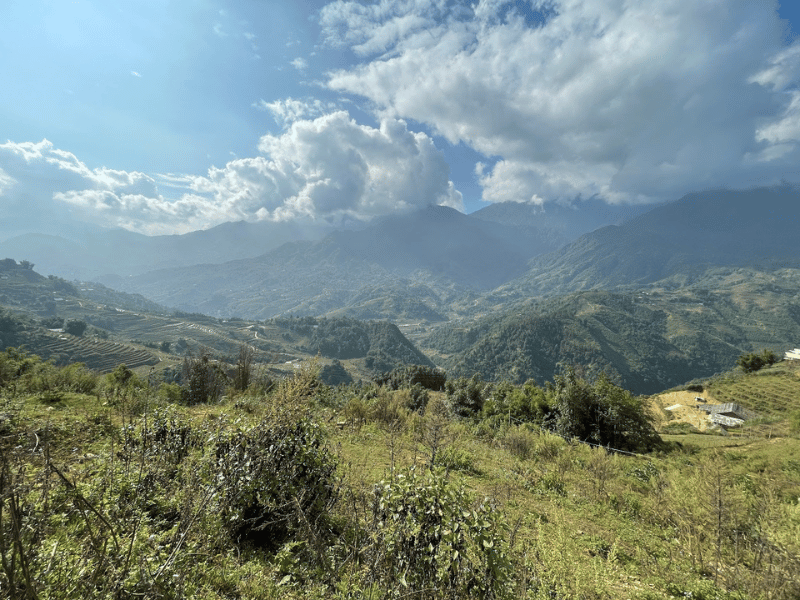 Upon arrival in Sapa, sometimes referred to as the “Town of Clouds,” I wandered the charming, lantern-strewn streets and caught a glimpse of Southeast Asia’s tallest peak, Mount Fansipan, towering over the Muong Hoa Valley. Our Smithsonian Student Travel groups spend four days in Sapa, exploring the town center as well as several of the smaller surrounding communities described below. From Sapa town, I and my guide trekked through mountainous terrain, bamboo forests, and lush vegetation to several highland communities, all the while learning about the Hmong, Dao, Tay, and other tribes who call northwestern Vietnam home.
Upon arrival in Sapa, sometimes referred to as the “Town of Clouds,” I wandered the charming, lantern-strewn streets and caught a glimpse of Southeast Asia’s tallest peak, Mount Fansipan, towering over the Muong Hoa Valley. Our Smithsonian Student Travel groups spend four days in Sapa, exploring the town center as well as several of the smaller surrounding communities described below. From Sapa town, I and my guide trekked through mountainous terrain, bamboo forests, and lush vegetation to several highland communities, all the while learning about the Hmong, Dao, Tay, and other tribes who call northwestern Vietnam home.
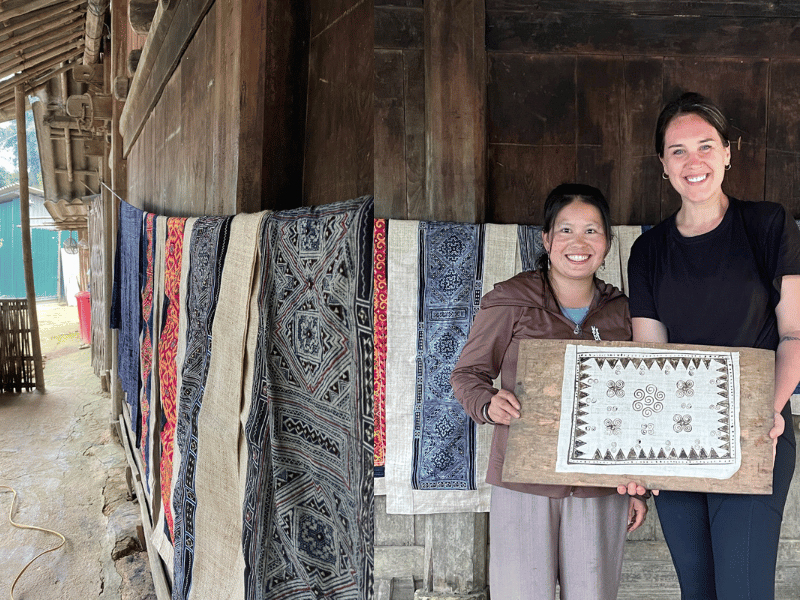
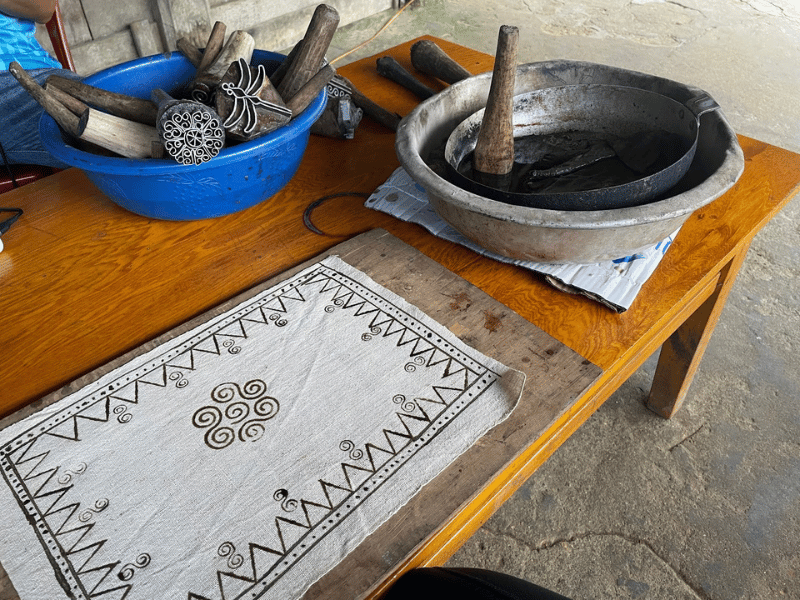
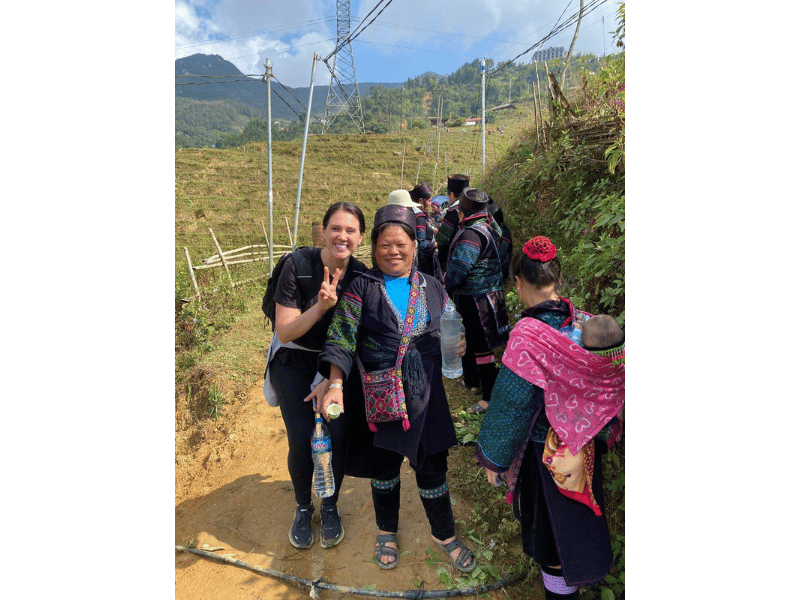 First, I descended with my guide into the beautiful rice terraces of the Muong Hoa Valley as we made our way to the first stop, a Black Hmong community called Lao Chai. Here I met Mrs. Sung, who runs batik workshops with her family. With her guidance, I tried my hand at the traditional batik dyeing methods the Hmong in this region are well-known for. To start the process, you dip your stencils or drawing tools in melted wax, and then carefully transfer your design to hemp cloth. Once finished, the cloth is boiled to remove excess wax and then dipped in dye made from the indigo plant. Mrs. Sung, and many in the community, grow their own indigo plants for this purpose. From Mrs. Sung’s, we continued our journey through the valley, stopping to watch water buffalo taking a snooze along the path, or to admire beautiful waterfalls thundering in the distant mountains.
First, I descended with my guide into the beautiful rice terraces of the Muong Hoa Valley as we made our way to the first stop, a Black Hmong community called Lao Chai. Here I met Mrs. Sung, who runs batik workshops with her family. With her guidance, I tried my hand at the traditional batik dyeing methods the Hmong in this region are well-known for. To start the process, you dip your stencils or drawing tools in melted wax, and then carefully transfer your design to hemp cloth. Once finished, the cloth is boiled to remove excess wax and then dipped in dye made from the indigo plant. Mrs. Sung, and many in the community, grow their own indigo plants for this purpose. From Mrs. Sung’s, we continued our journey through the valley, stopping to watch water buffalo taking a snooze along the path, or to admire beautiful waterfalls thundering in the distant mountains. 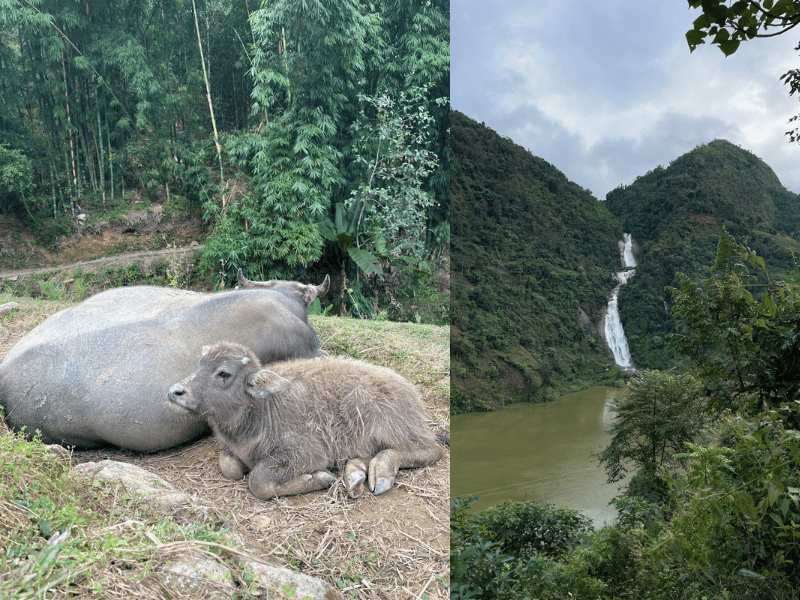
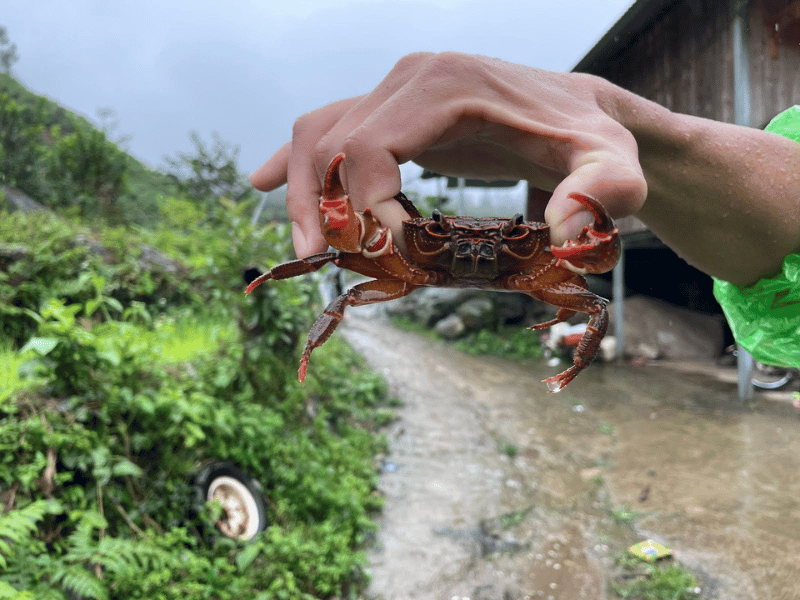 Soon, we arrived in the quiet, mountain community of Nam Cang. Most of the residents here belong to the Red Dao tribe, and are known for their knowledge of traditional plant medicine and herbs. Here, Mrs. Phu showed me how many in the community make paper from bamboo, which is often used for sacred or religious purposes. She also informed me that those in the community who can read and write are most often shamans.
Soon, we arrived in the quiet, mountain community of Nam Cang. Most of the residents here belong to the Red Dao tribe, and are known for their knowledge of traditional plant medicine and herbs. Here, Mrs. Phu showed me how many in the community make paper from bamboo, which is often used for sacred or religious purposes. She also informed me that those in the community who can read and write are most often shamans. 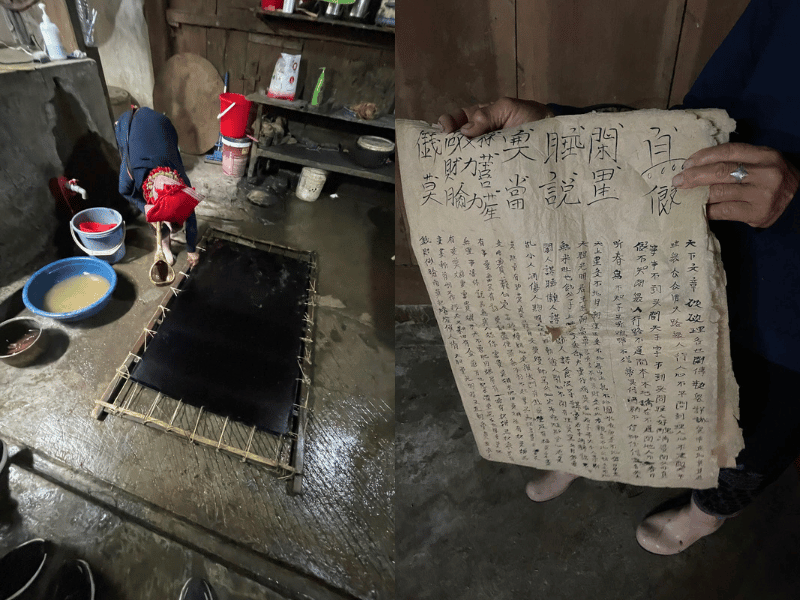 Mrs. Phu then took me to a local silversmith’s home to see how the beautiful silver jewelry worn by many Dao people is made. Some jewelry makers obtain their silver from old coins, such as those pictured below.
Mrs. Phu then took me to a local silversmith’s home to see how the beautiful silver jewelry worn by many Dao people is made. Some jewelry makers obtain their silver from old coins, such as those pictured below. 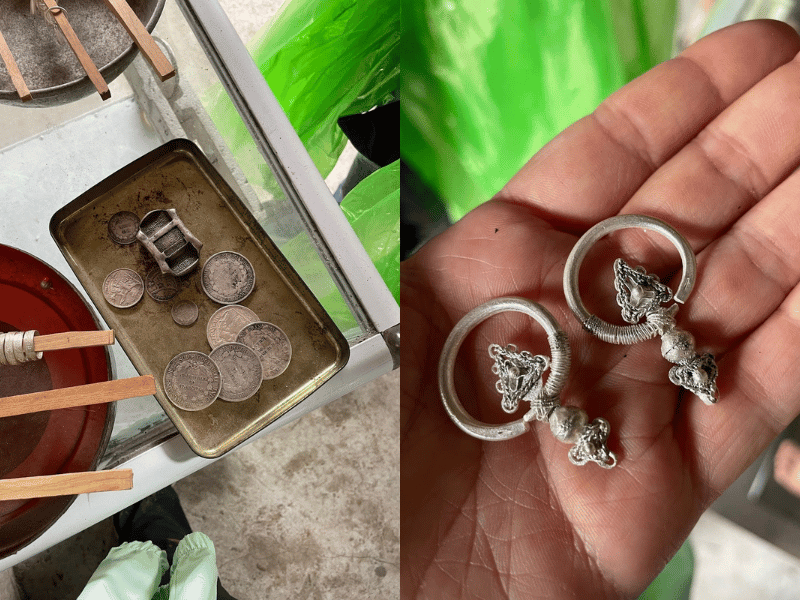
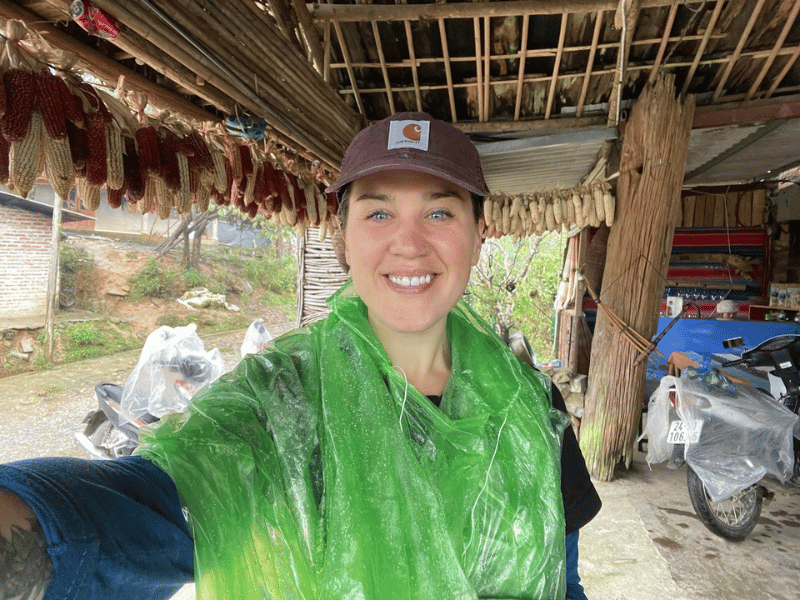 As I left Nam Cang, a heavy rain started to pour and stream down the sloping streets. Then, as I arrived back in Sapa town, the rain gave way to a thick blanket of fog cloaking everything in gauzy gray. Over a steaming hot pot dinner with a fellow traveler I met along the way, I reflected on all I had the privilege of seeing and learning during my time in the Town of Clouds. Sapa is a place I won’t soon forget. To learn more about our program in Thailand & Vietnam, click here.
As I left Nam Cang, a heavy rain started to pour and stream down the sloping streets. Then, as I arrived back in Sapa town, the rain gave way to a thick blanket of fog cloaking everything in gauzy gray. Over a steaming hot pot dinner with a fellow traveler I met along the way, I reflected on all I had the privilege of seeing and learning during my time in the Town of Clouds. Sapa is a place I won’t soon forget. To learn more about our program in Thailand & Vietnam, click here.
(833) 734-6674
Login

